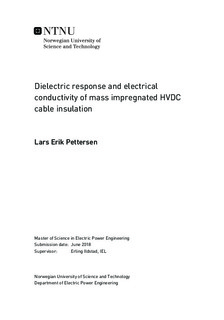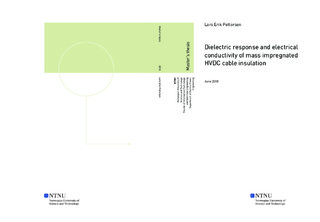| dc.description.abstract | The main purpose of this thesis has been to gather data which facilitates design improvements
of oil-impregnated paper insulation used in HVDC cables. Conductivities and loss
tangents were gathered for this purpose. Several minor studies for improving the methodology
was conducted throughout the thesis.
Samples of oil-impregnated paper and modified samples with oil pockets (called bulk oil
samples) and butt gaps were constructed and subjected to several voltages and temperatures
in order to obtain polarization and depolarization currents. These currents were then
utilized to calculate the conductivity of the various samples. Conductivities of paper were
obtained from literature while conductivities of oil were derived from measurements.
The method Polarization Depolarization Current (PDC) was used to obtain the currents
by use of a laboratory setup. The loss tangent was obtained from the Hamon approximation
where the goal was to verify the applicability in paper, bulk oil and butt gap samples.
Results from the main study showed that the conductivity dependency of paper on electric
field strength and temperature was in accordance with the literature. Voltage across the oil
in bulk oil samples differed significantly from zero, as opposed to previous assumptions of
zero voltage across the bulk oil. Steady state current in bulk oil samples were exponential
with respect to voltage but turned linear with increasing oil volume. Conductivity of oil
and paper were in the same range, as opposed to previous assumptions of a higher conductivity
for oil. Conductivity of oil versus electric field strength in oil showed an exponential
dependency.
Calculated DC currents of a bulk oil sample compared to measured values showed equal
magnitudes at low voltages but different exponential rate of rise. A sensitivity analysis
showed that conductivity of paper dominates the calculated DC current. The Hamon approximation was applicable for paper samples but not for bulk oil and butt gap samples.
Results from the minor studies showed that PDC is viable for monitoring the impregnation
process. It showed that most of the absorption of oil into paper occurs during the first 12
hours. Currents in dried paper were 10 times higher than impregnated paper. Insufficient
polarization durations significantly affects the DC currents at low voltage. The samples
required at least one day to reach thermal equilibrium after a temperature drop. Samples
with at least 5 sheets of paper are applicable for PDC measurements. | |

